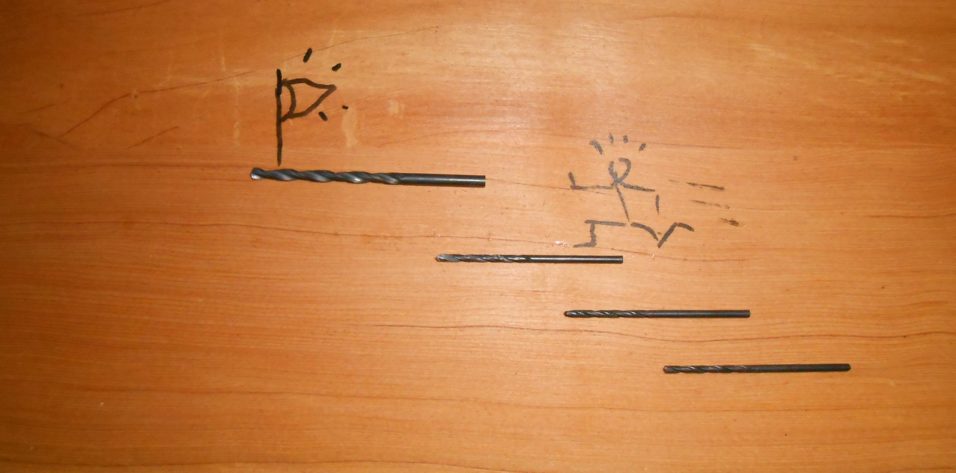
A 54-year-old woman came to our office expressing the wish to be spectacle independent for normal activities. She was not dedicated to any particular intellectual work or hobby. After examination, I recommended refractive lens exchange with implantation of an extended depth of focus (EDOF) lens, thinking that it would be the best option for this housewife. The lens that I recommended was a Mini Well Ready IOL (Sifi; not available in the United States) in conjunction with implantation of a capsular tension ring (CTR).
The patient underwent a normal postoperative course following a simultaneous bilateral refractive lens exchange procedure, with a 2.2-mm incision located at the positive meridian to compensate for 0.75 D of astigmatism. The result was emetropia in both eyes, and at 2 weeks postoperative the patient’s distance UCVA (UDVA) was 20/20-, although only J4 for near. The patient also reported poor-quality distance vision. I explained to her that neural adaptation can take several months and advised her to wait and see if her vision improved.
At the end of month 3 postoperative, the patient came back to our office angry because she couldn’t read and her distance vision was, despite being 20/20, not of the quality she had expected. She reported problems driving at night because of her poor vision and said she was unable to drive on highways because she could not read road signs in the distance, even in daylight.
BACK TO THE OR
As the patient’s near vision was poor (almost J5) and her subjective impression of distance vision was also poor, I suggested that we replace both EDOF lenses with monofocal IOLs. She agreed and returned to surgery, and, thanks to implanting a CTR at the beginning of the case, I was able to easily explant the Mini Well lenses and implant AcrySof IQ (Alcon) lenses. My target was mini-monovision, with -1.00 D in the patient’s dominant eye and 0.50 D in her nondominant eye.
Like the first surgery, the second procedure went well, and this time the patient had J3 near vision and 20/25 binocular UDVA. But again, the patient was unhappy because her goal of spectacle independence in each eye was not reached. I told her to wait at least 2 months to adapt to her new visual situation.
At the end of month 2, the patient was still angry and unhappy. She claimed that we had cheated her because we promised something that we could not accomplish. She said that she wanted to be able to read with both eyes, and she could not tolerate or understand the monovision strategy, despite my extensive explanation before surgery. I began to think that this patient should never have had surgery.
TIME TO TALK
Three months later, the patient initiated the process of making a legal claim against us. I decided to arrange a consultation with the patient and her family, in the presence of one of my colleagues and nurses, to be sure that everyone understood what I was telling her. At that meeting, I advised her to have surgery a third time. This time, I said, I would exchange each of her monofocal IOLs with a refractive rotationally asymmetrical IOL, the Lentis Mplus (Oculentis), with asymmetric correction (1.50 D in the dominant eye and 3.00 D in the nondominant eye) in order to ensure that her distance vision would not have any distortion or dysphotopsia.
Everyone present at the consultation agreed that this was acceptable. I explained to the patient that we had seldom performed surgery like this. We had limited experience at that time addressing neural adaptation problems by exchanging a multifocal lens for another multifocal of a different optical design. It was an idea that I had used in only a handful of cases previously.
The patient underwent surgery a third time, and I took special care to cause minimal trauma and to induce no further astigmatism. The AcrySof IOLs were explanted and the Mplus implanted without complications. Again, the CTR was a key factor in performing this surgery successfully, which at this point, was 6 months after the initial procedure.
FINALLY HAPPY
Following the third surgery, the patient was happy almost immediately. At the end of 1 month postoperative, she had 20/20 binocular UDVA and J1 near vision, and she reported no halos, glare, or any type of visual distortion. At the 3-month final follow-up visit, all was well with no complications.
This patient should probably never have had refractive lens exchange surgery because of her difficult personality, although we were unable to detect that personality trait when we saw her initially. Further, we should not have chosen a pure EDOF lens because lenses with high levels of spherical aberration can induce poor quality of vision that many patients find unacceptable.
This was one of the first cases in which we chose the option of using a different multifocal optical technology to treat neural adaptation problems with multifocal IOLs (see above). Recently, we have brought together this difficult and challenging group of patients in a paper that has now been submitted for publication.1
1. Al-Shymali O, McAlinden C, Alio Sanz JL. Outcomes of multifocal intraocular lens exchange by a different multifocal technology in patients with neuroadaptation failure. Clin Exp Ophthalmol. [In review].




